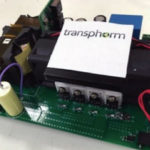By Eric Persson, Senior Principal Engineer AC-DC Applications, Infineon Technologies
We take motors for granted – they have been with us since Benjamin Franklin experimented with electrostatic types nearly three hundred years ago – but the days are long gone when they were controlled in a simple on/off way. Motors in today’s applications, from clothes dryers to robots, have to be ‘smart’, with speed, direction, and torque control. As with all technology, they also have to be small, lightweight, and low cost.
To achieve the control necessary, motors are fed with three-phase, pulse width modulated AC. With switched-mode techniques, this is quite efficient. With frequencies typically around 16 kHz, dynamic losses are low, even with older technology switches such as IGBTs. Conduction losses remain, so with the imperative for even better efficiency, many motor drives now use MOSFETs, which can drop less voltage than IGBTs at low and medium powers. MOSFETs and IGBTs are available for the applications in ‘Intelligent Power Modules’ (IPMs), which typically package six devices with associated gate drives and protection features.
MOSFETs switch faster than IGBTs, so dynamic losses are lower, but this is a mixed blessing – fast edge rates or ‘dV/dt’ can cause a range of undesirable side effects from EMI to the motor winding insulation stress, resulting in degradation and breakdown and even mechanical wear in bearings due to common-mode currents flowing to ground. Edge rates and their effects can be reduced by snubbers, slowing gate drives, and filtering, but in all cases, efficiency is reduced to some extent giving a less than optimum solution.
The wide bandgap switch approach
IPMs with MOSFETs are efficient, but there is relentless pressure to improve cost and energy savings further. To improve conduction losses, designers now consider wide band-gap semiconductor technology such as GaN, which has the lowest relative on-resistance in a particular voltage class. However, the dV/dt problems are compounded because GaN switching edge rates are phenomenally fast, in the order of hundreds of kV/µs. To tame the device for a practical application, heavy snubbing and filtering are not preferred because of the losses re-introduced, so controlling dV/dt by tailoring the gate drive is a solution. The principle is simple; a series resistor acts with the GaN device gate capacitance to form an RC network that slows the gate drive edge, in turn slowing the drain dV/dt. For better control, separate resistors for a positive and negative drive can be used with diode steering.
For all its advantages, a GaN transistor does have a drawback, however. Gate capacitance is low but varies widely with operating conditions, typically over a three-decade range, mainly due to the ‘Miller effect’. This means that if the dV/dt is set under worst-case conditions to be the optimum for reliable motor operation, perhaps 5 kV/µs, under other conditions, the gate drive will be much slower, with a significant drop in efficiency (Figure 1).

A solution considered is to sample the drain voltage through a capacitor, which generates a current proportional to dV/dt. This is then fed back to the gate drive circuit to control gate charge and discharge currents, giving constant edge-rate under all conditions. The high-voltage capacitor is a problem to implement and incorporate in an IPM. However, and can even induce damaging oscillation due to its finite connection inductance.
A breakthrough moment came when Infineon engineers realized that if a small drain-gate capacitance is fabricated in the GaN device die, it has a ‘linearizing’ effect on overall capacitance. Only around 1.2 pF is sufficient, which has negligible effect otherwise, but it accurately limits dV/dt. Figure 2 shows the effect, with edge rate limited to around 5 kV/µs on turn-on. At turn-off, dV/dt is limited to the same value, falling to 3 kV/µs at light loads where losses are lower anyway.

Figure 3 shows the effect in a real motor drive application – a near halving of losses for the same temperature rise, allowing more power or a smaller product.

GaN can now be considered for motor drives for the highest efficiency and performance, with its slightly higher unit cost more than offset by system hardware and energy savings.





Leave a Reply